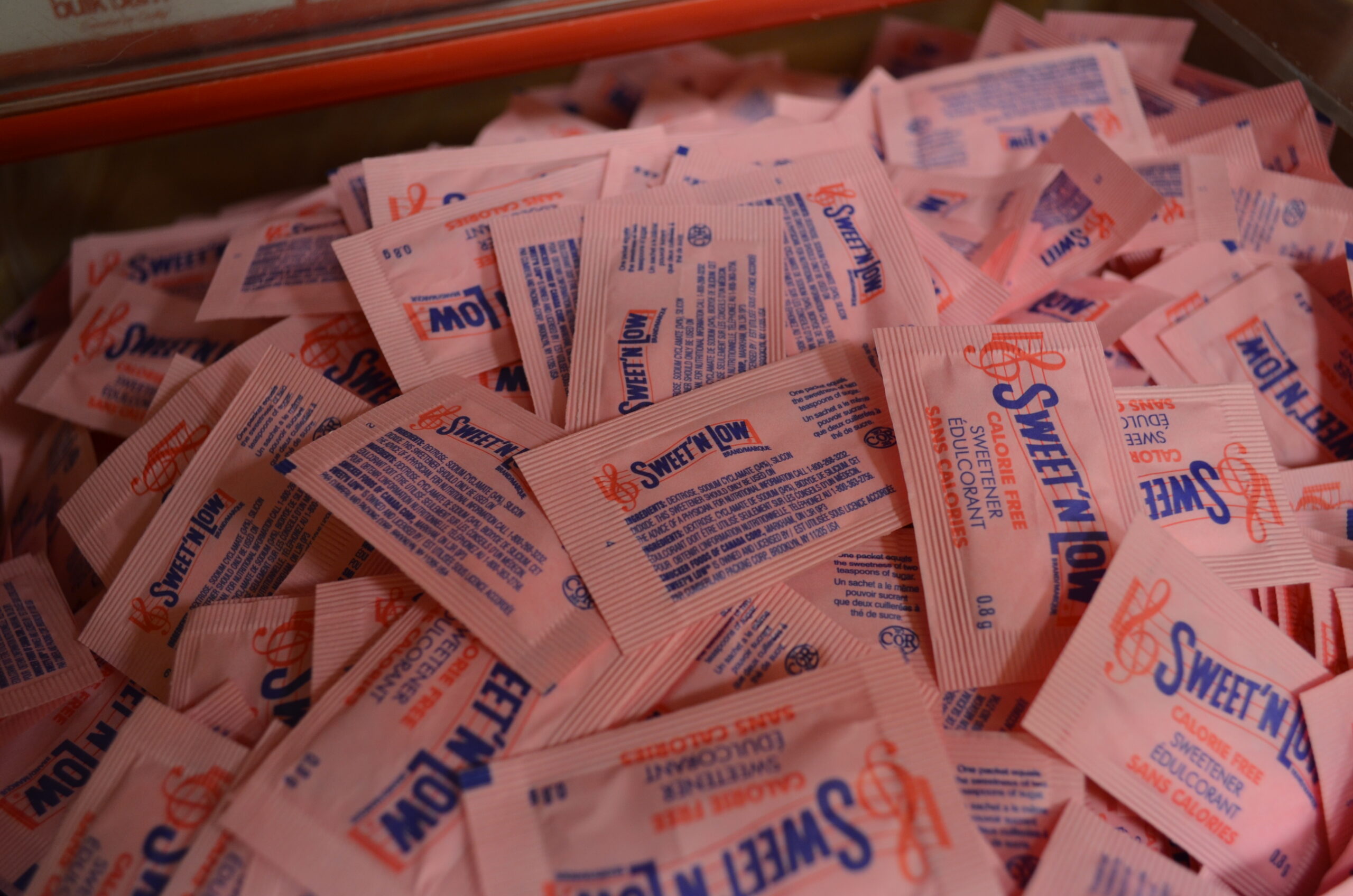Is the sweetener aspartame as carcinogenic as smartphones?

It is an odorless white powder about 200 times sweeter than sugar. Used for more than 40 years and present in over 6,000 products, the sweetener aspartame is once again placed on trial for "possible carcinogenic risk". Meanwhile, the International Sweeteners Association is already having a stomach ache and Chinese producers of alternatives are rejoicing. All the details
Accidentally tasted in 1965 by American chemist James M. Schlatter, who licked his fingers while working on an ulcer drug and discovered its exceptional sweetness, the sweetener aspartame, following its approval as a food additive, began to be used in diet products in 1981.
Despite scientists and researchers claiming that it is not effective for weight loss – which is usually the main motivation that drives consumers to use it – and although it has come under the magnifying glass several times over the years , its presence in over 6,000 products it has never been officially declared harmful to health.
However, next July 14, the International Agency for Research on Cancer (IARC), the agency of the World Health Organization (WHO) specialized in cancer research, could classify aspartame as a "possible human carcinogen ”. Reuters gave the news in preview.
WHAT IS ASPARTAME
Aspartame, according to the definition of the European Food Safety Authority (EFSA), is an intense, low-calorie artificial sweetener. It comes as a white, odorless powder and is about 200 times sweeter than sugar.
HOW MUCH OF IT IS PRODUCED AND IN WHICH FOODS IT IS FOUND
Every year 3,000 to 5,000 tons of aspartame are produced worldwide. Many use it instead of the traditional sugar in coffee but it is present in many products: from "zero" drinks to chewing gum, in ice cream, yoghurt, snacks, milk and cheese-based foods, as well as in low-energy products .
WHAT THE LAW SAYS ABOUT ITS USE
For many years and in many countries, following accurate evaluations, aspartame has been judged safe for human consumption. In the European Union, the label on food products containing aspartame must declare its presence, indicating its name or its number with the E in front (E951). According to EFSA, the acceptable daily dose is 40 milligrams for every kilogram of body weight.
In the United States, the Food and Drug Administration (Fda), recommends a daily intake of no more than 50 milligrams for each kilogram of body weight. To give you an idea, a 350ml can of diet soda contains about 200ml.
WHY THE IARC MAY DISAGREE
Until now, studies had shown that aspartame was not related to an increased risk of developing cancer, but a French study conducted last year on 100,000 people observed a slight increase.
The IARC, after having analyzed 7,000 references and 1,300 publications on the subject, could therefore change the fate of one of the most used sweeteners. The agency team met in June and a meeting of a different WHO-FAO working group is now underway, which will have to establish the safe dose. “The two evaluations are complementary – said the IARC -. That is why the result of the evaluations will be made available together”.
The response is expected on July 14, when both the evaluation in the journal Lancet Oncology and the Iarc monograph dedicated to aspartame will be available.
HOW IT COULD BE CLASSIFIED
The agency will then report whether aspartame should be included in the category of substances considered "possible carcinogens". In fact, the WHO uses a classification system made up of four groups to evaluate the carcinogenicity of substances.
Group 1 is the one dedicated to substances for which there is sufficient evidence of carcinogenicity. Group 2A instead includes substances that are considered "probable carcinogens"; while those of Group 2B are classified as "possibly carcinogenic". Finally, there is Group C which includes substances of "suspected carcinogen", but for which no evidence of carcinogenicity is available.
However, even if aspartame were included in the list of "possible carcinogens" it would end up in the company of many other substances that are part of our daily lives: from aloe vera to radio frequency waves and diesel.
As the experts reiterate, rather than the classification, the real difference is made by its prolonged use over time and the quantity consumed, even if some of them, for example the nutritionist and president of the National Food Safety Committee of the Ministry of Health, Giorgio Calabrese , they believe that natural products are still the best.
STOMACH ACHE AT THE INTERNATIONAL SWEETENER ASSOCIATION
Instead, the International Sweeteners Association (ISA) is starting to worry, which in a note declared that it joins the world food safety agencies but also has "serious concerns about the preliminary speculations on the opinion of the IARC, which could mislead consumers about the safety of aspartame."
ADVANCED CHINESE?
Indeed, the fears of the ISA are already materializing. Indeed, according to Bloomberg , Chinese producers of substitute sweeteners are on the crest of the wave: “The shares of Baolingbao Biology and Shandong Sanyuan Biotechnology which produce the natural sweetener erythritol jumped on Friday [June 30, ed ] by at least 10% each. Anhui Jinhe Industrial producer of additives, including sucralose, gained 9.8%, while Shandong Kaisheng New Materials which uses a raw material used in its production advanced 15%”.
But in some cases replacing aspartame with other substances could mean going from the pan to the fire when you consider that, for example, sucralose is 600 times sweeter than sugar.
This is a machine translation from Italian language of a post published on Start Magazine at the URL https://www.startmag.it/sanita/il-dolcificante-aspartame-e-cancerogeno-quanto-gli-smartphone/ on Tue, 04 Jul 2023 11:28:50 +0000.
